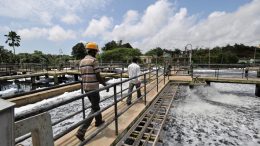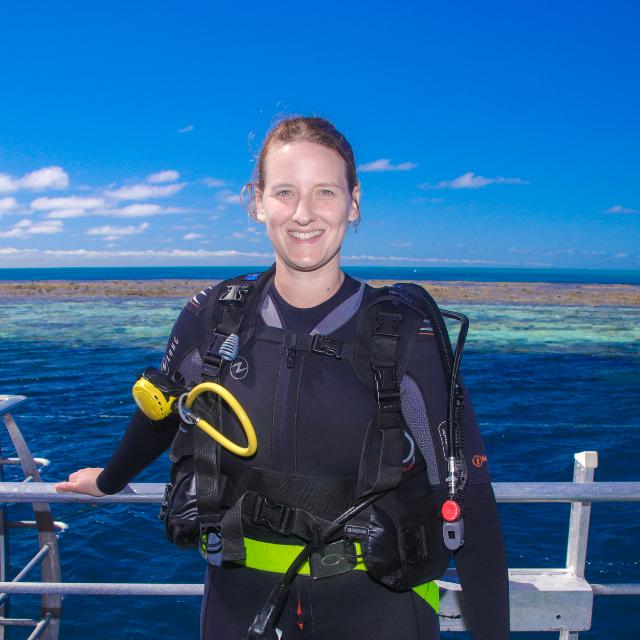As rising sea levels and climate change-induced storms batter coastlines the world over, one threat often flies under the radar: sewage pollution.
Today many tropical coastal communities on the frontlines of climate change find themselves battling not just erosion and flooding, but also crumbling sanitation systems. Sea-level rise and storm surges, especially in rural and low-resource areas, bring saltwater pouring into inland spaces, where it corrodes pipes, damages pit latrines, and floods freshwater aquifers with sewage-laden salty water.
More frequent and severe storms flood pit latrines and septic tanks and overwhelm treatment plants with stormwater, causing uncontrolled discharge. As these systems fail, overflowing waste contaminates groundwater, soil, and water bodies, increasing the risk of waterborne diseases, exacerbating existing inequalities, and creating unsafe conditions for sanitation workers.
As we’ve seen in our work studying coastal pollution, the damage to sanitation systems is not just a human health issue (though that’s bad enough). It has profound environmental consequences. Sewage carries pathogens and high concentrations of nutrients and organic matter that cause coral disease and mortality, generate algae blooms that smother seagrass meadows, weaken the root systems of mangroves, and kill fish.
The waste also increases the vulnerability of coastal ecosystems to climate change. For instance, sewage makes corals more sensitive to marine heatwaves. The weakened mangrove forests are more susceptible to erosion from sea-level rise and are less able to store carbon. Nutrients and higher temperatures combined amplify algae blooms.
Degradation of coastal ecosystems, meanwhile, creates a vicious cycle in which damaged sanitation systems lead to more pollution that further harms ecosystems, making them less resilient to climate impacts and less able to protect coastal communities — and results in yet more damage to sanitation systems.
To break this dangerous pattern, we must adopt integrated approaches that link sanitation with ecosystem conservation. The benefits are clear — climate-resilient sanitation systems result in healthier coastal communities and ecosystems.
So why does so much sewage continue to enter our coastal ecosystems? One reason is a lack of funding. Pollution mitigation activities received just 3.9% of all philanthropic funding for oceans between 2010 and 2022. Public funding and development finance for sanitation similarly lags, with the annual funding gap estimated to be as high as $140 billion.
In response to these challenges, a growing alliance of international organizations, global research institutions, and practitioners in the fields of water, sanitation, and conservation have formed the Climate Resilient Sanitation Coalition. The Coalition has partnered with the Green Climate Fund, the world’s largest climate fund, to develop step-by-step advice on designing sanitation systems that can withstand climate impacts.
For the first time, sanitation projects that incorporate climate adaptation and mitigation strategies will soon be eligible for funding from the GCF.
For example, the fund could finance projects that reduce sanitation’s negative impact on coastal ecosystems and their ability to store carbon.
This is a game changer — a crucial shift recognizing that some of our greatest challenges can be tackled together. This framework also serves as a powerful basis for attracting additional funding streams, opening doors for other climate finance sources and conservation investments to support sanitation projects.
In facing the complex challenges of climate resilience, it’s clear that neither sanitation nor conservation can go it alone. These sectors, often seen as separate, are inherently linked — each affecting the other in profound and cascading ways.
Recognizing that the climate resilience of coastal communities is dependent on both robust sanitation systems and healthy coastal ecosystems may require a shift in perspective, seeing sanitation not just as an infrastructure and development challenge but as a vital piece of coastal ecosystem stewardship.
We must also shift our view of ecosystems as the passive recipients of waste to dynamic, protective systems essential to human health and resilience. In doing so we not only protect today’s coastal communities but lay the foundation for future generations to inherit coastlines that are not just resilient, but thriving.

Previously in The Revelator:
Could Cleaning the Tigris River Help Repair Iraq’s Damaged Reputation?



